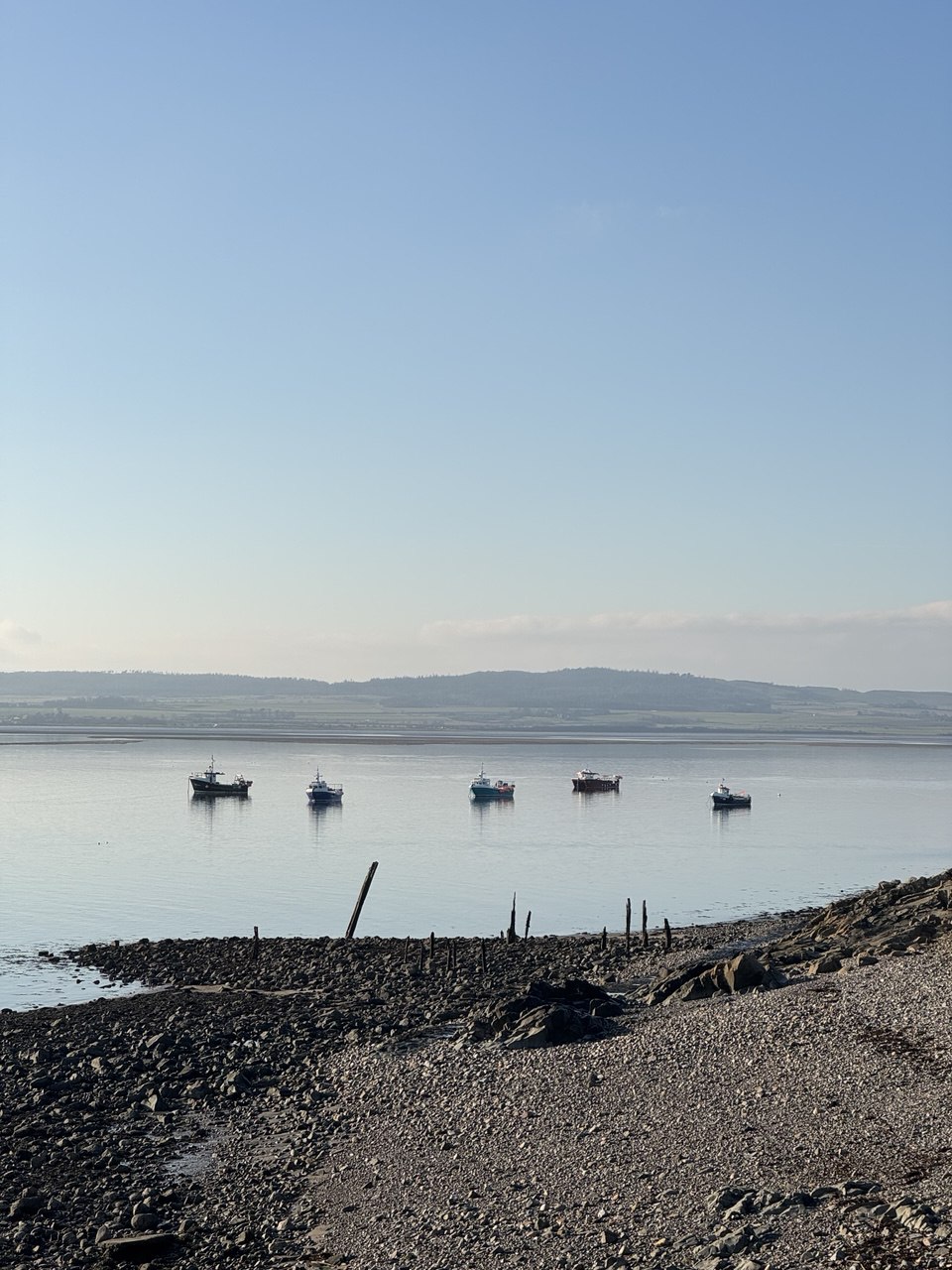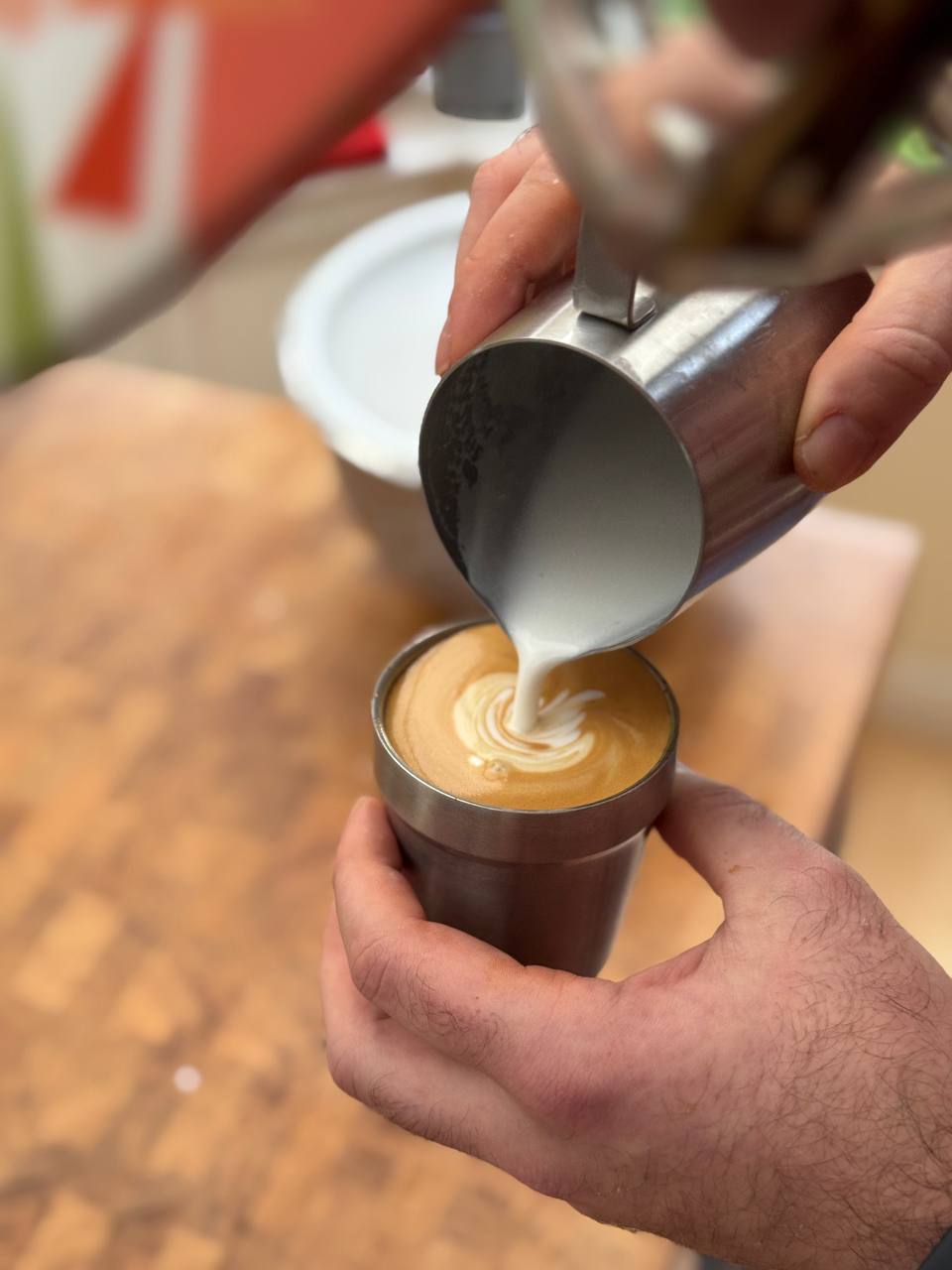|
Your weekly crème de la crème of the Internet is here!
29.10.2024 (read in browser)
This is the free monthly edition of the newsletter. If you want to receive every weekly edition, plus access the full archive of both free and paid newsletters, subscribe here.
Don't miss out on future newsletters – upgrade now to get access to all of them.
On harvest
Autumn is the time for harvest, and while most people stumble upon pumpkin patches or dig potatoes, I open up my curing chamber to take the measurements and see if anything else is ready for packing:
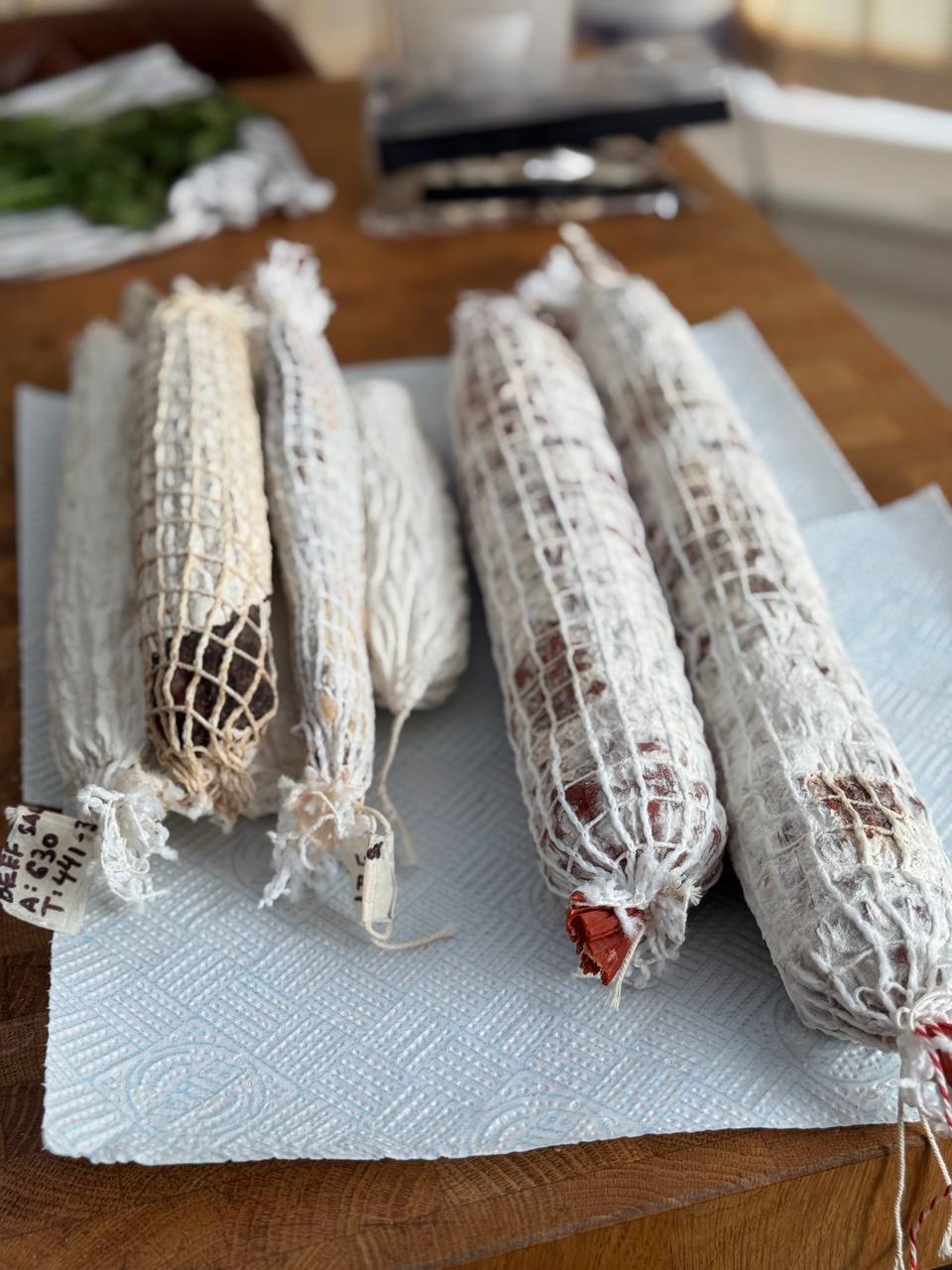
This time I got a batch of slightly different beef salami – my first venture in the world of kosher charcuterie. I am quite happy with the flavour here, but the texture probably could use some more work: beef fat is way harder to work with.
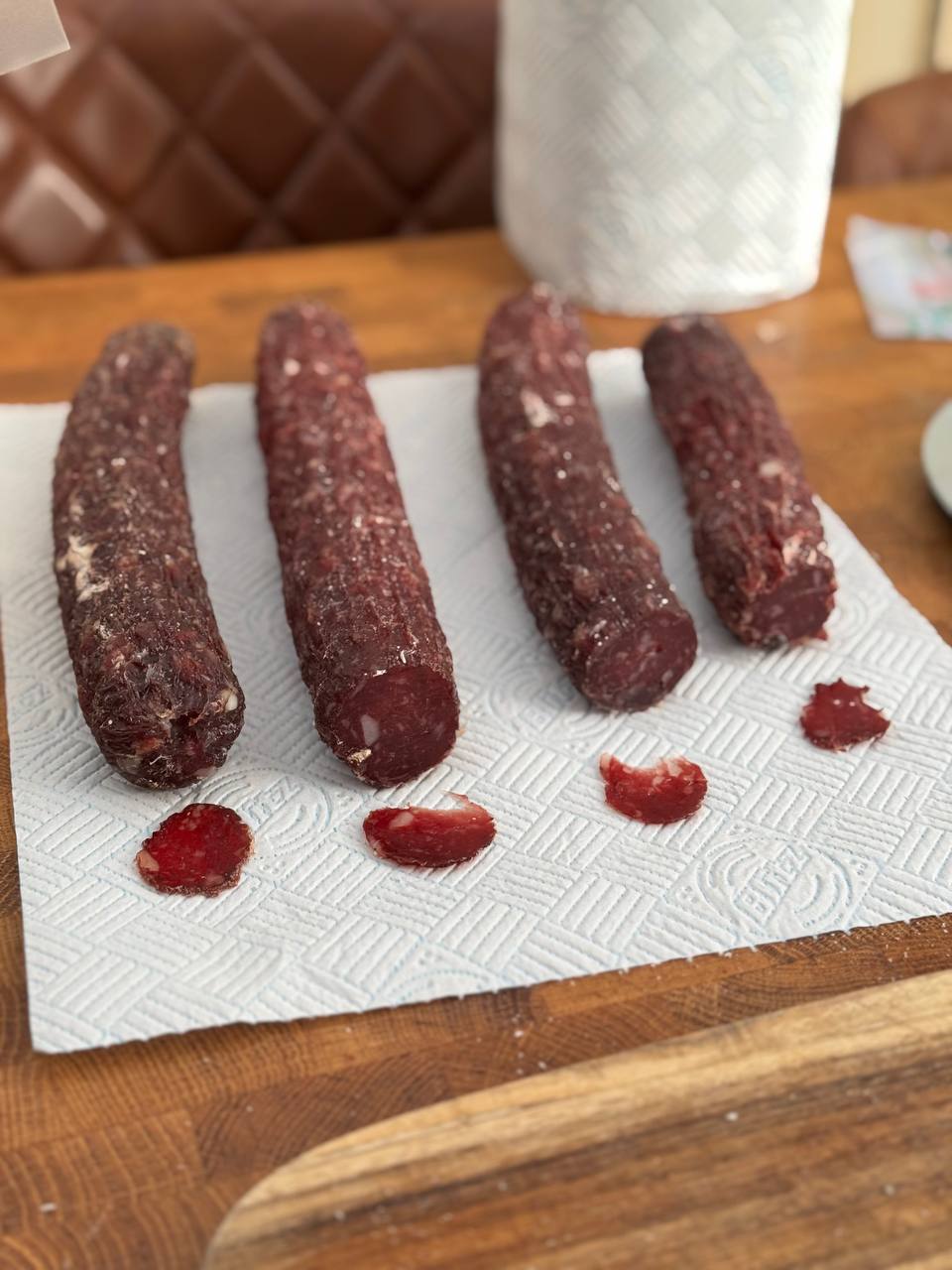
I also made some saucisson sec, and this one I am really happy with:
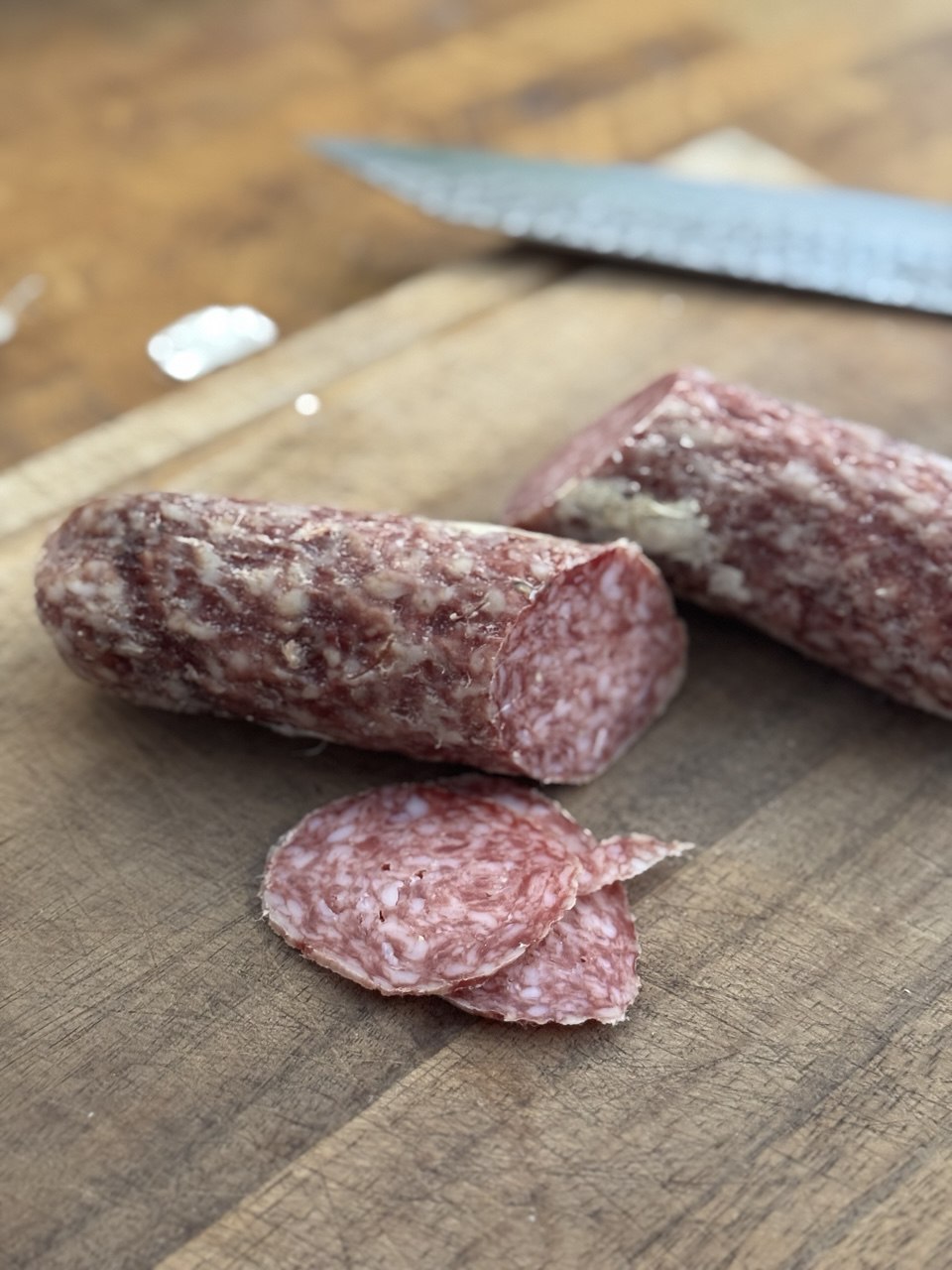
And tried to make some salame gentile, which turned out quite well albeit a bit soft – probably next time I should dry it more than called for in the recipe:
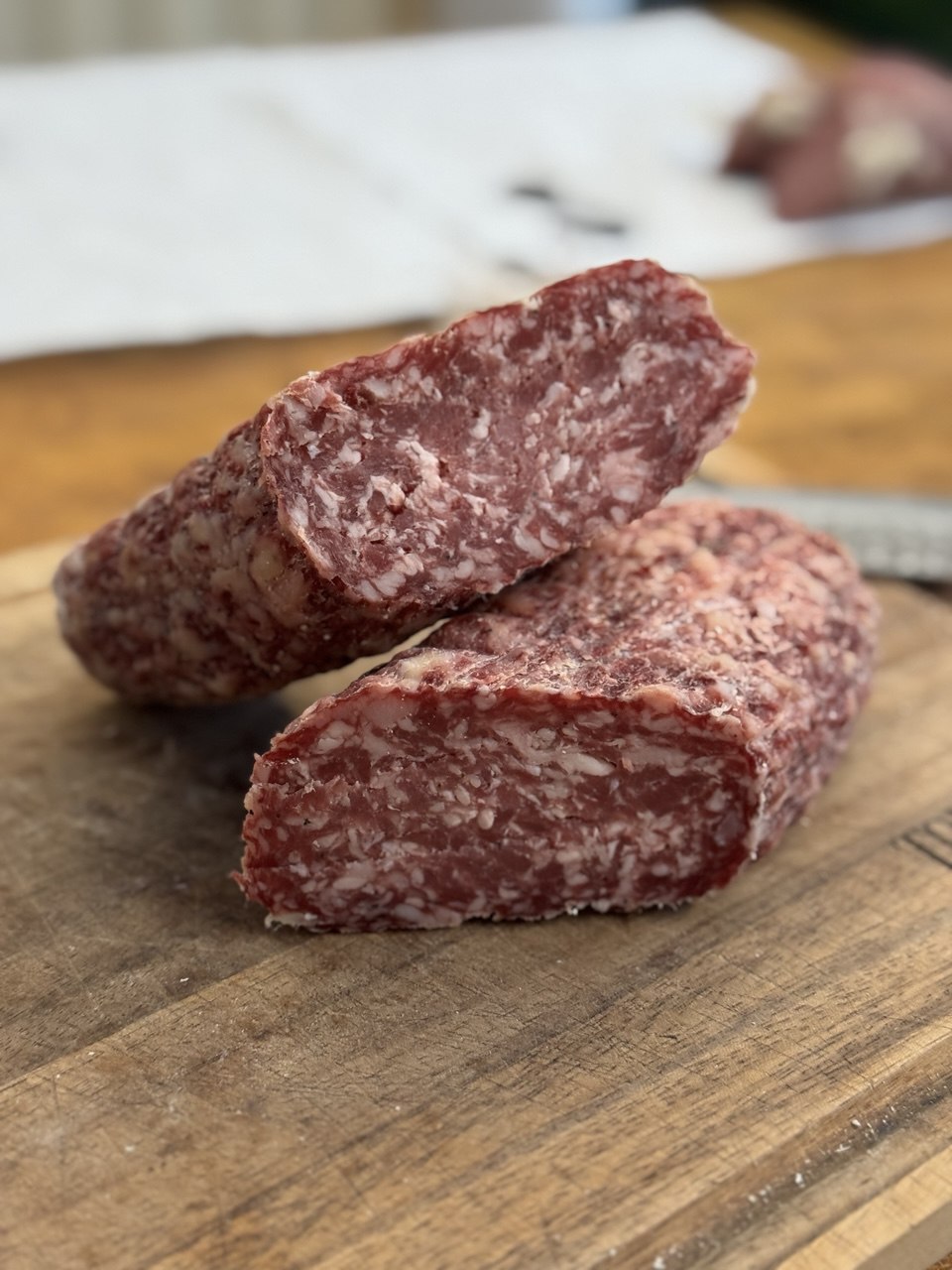
Now everything is vacuum-packed and held in the fridge to equalize – not necessary but highly beneficial to make sure there are no hard casings or soft spots throughout the pieces.
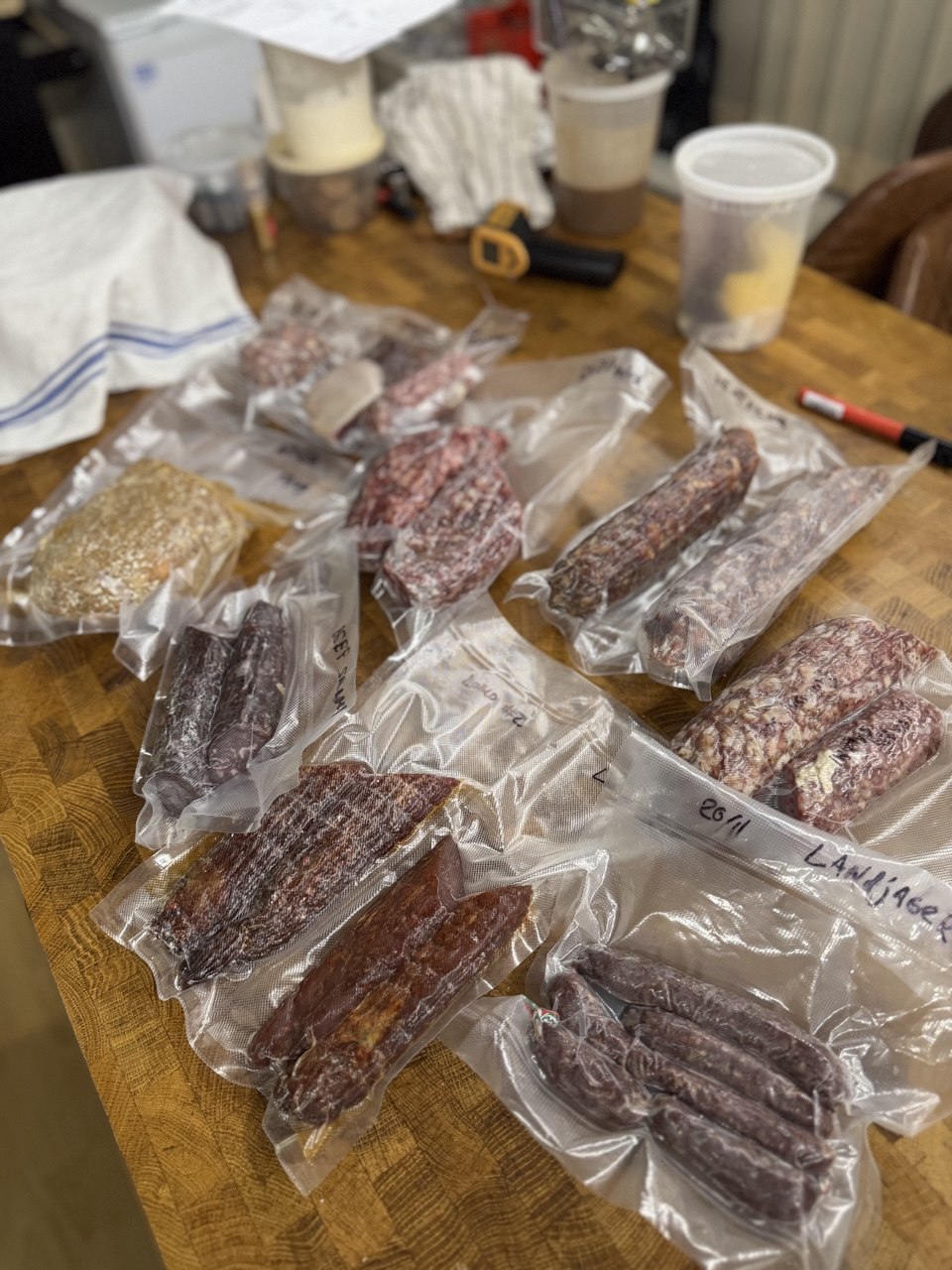
Seems like I am settled for this year charcuterie wise, and the weather is getting colder, so I might be looking in the direction of dry aged steaks and aged cheeses instead.
Things I enjoyed reading
I shared a similar post not so long ago, but this one is more about the actual experience of crossing the States by train versus the hypothetical idea and possible difficulties one might face.
I didn’t notice this at first, but under the ceiling, there’s a ready-made fold-down bed, with straps to make sure you don’t fall out!
And the lower seats also can be collapsed flat, and there’s an extra mattress to put on top; so this room can be used by two people!
Coming from a country where overnight trains are often the only way of getting around, not a peculiar experience, it does make me chuckle though.
Necessity is the mother of invention as people often say, and the rationing and time right after it prompted a lot of inventions indeed:
After the war and rationing ended, Americans still faced some challenges in grocery shopping. A lot of foods were being sent to Europe and elsewhere to feed Allies whose farmlands had been devastated or neglected. As food choices and availability improved after the war many Americans compensated for wartime scarcity by eating meat- and butter-rich meals. Grilling a steak became the height of entertaining. But some wartime foods (including some with roots in earlier times of shortage, like the Great Depression) stuck. Among these are stuffed peppers; Kraft macaroni and cheese; and fruit cobbler.
I knew about many dishes mentioned in the article, and growing up with dishes based on Soviet cookbooks, even the ones written years after the WWII, it's interesting how many dishes were common. For example, the author mentions that ground beef was popular during wartime, as it needed less ration stamps than any other meat, so stuffed peppers and stuffed cabbage leaves with a mixture of a little ground beef and rice were common, and these are two dishes I had a lot throughout my childhood and actively try to avoid these days.
I didn't know Google hosts longreads on their platform, and this one is a pleasant surprise: more of a visual story rather than a documentary, so you might want to augment it with other sources.
Following the Second World War, Adriano returned to Ivrea after a period of exile and decided to take the reins of the factory, using it as the basis for the pilot project for a new social order. In this period, Olivetti expanded its cultural and welfare programmes with cutting-edge initiatives. Work on the assembly line went from being a driver of unhappiness to an instrument of redemption.
In a nutshell, decades before Steve Job's raise to spotlight, someone else was also driven by a vision and built a different way of living instead of just building a factory he was commissioned to build: education was available on-site, lunch hours were filled with acrots and musicians, pensions were substantial and so on – all in 1950s!
I should talk about what I do for work more often, because it's cool, but here is a sneak peak into the science behind our products.
How is this crucial brain-body connection orchestrated? The answer involves the very unusual vagus nerve. The longest nerve in the body, it wends its way from the brain throughout the head and trunk, issuing commands to our organs and receiving sensations from them. Much of the bewildering range of functions it regulates, such as mood, learning, sexual arousal, and fear, are automatic and operate without conscious control. These complex responses engage a constellation of cerebral circuits that link brain and body. The vagus nerve is, in one way of thinking, the conduit of the mind.
It's also worth mentioning that often people compare companies interacting with the vagus nerve with Elon Musk's Neuralink, but it is quite a different approach and product.
I've seen Doom running on pretty much anything – from iPhones and Apple Watches to fridges and cars – but running it in a Photos app is definitely the first one for me:
It is…technically playable? We managed to pick up some power ups and shoot at some enemies. It requires 8 manually configured iOS shortcuts, a dedicated photos folder, and a separately configured computer.
The magic behind this implementation mainly relies on iOS Shortcuts being Turing-complete, so pretty much capable of running any code if you're persistent enough. Is it enjoyable to play? Most likely it's not, but it's cool nonetheless.
I tend to approach articles with a title like this one with a pinch of salt, because usually they fail to mention some critical to the story details, like funds coming from the dad's company. This one is as transparent as it gets though:
Using the CAD file, Nerressa got final pricing from the factory. I stayed up late chatting with her to finalize a few details.
By the end of the night I had placed the order with the factory for 1,000 units at $4.50 per piece before packaging and freight.
They would be machined out of a solid piece of brass.
Putting the usefullness of the product aside, the author even mentions that they probably wouldn't see the same results without their already available mailing list of potential clients. Yeah, if you don't have 60k emails on stand-by, making $1 million in two months might be harder, but I still like how everything was handled very smooth, from ideation to launching.
I do agree with the majority of this essay on common misunderstanding of reading, partly because that's precisely the reason I don't read self-improvement books at all, unless the title lures me into thinking it's a cookbook instead.
Sure, on the surface, devouring pages appears to offer ways to extend your capabilities. But in reality, you can’t make monumental changes in your life if you only read.
My enthusiasm for books faded with the following realization: I wasn’t trying to improve like I said I was doing. I was trying to avoid improvement.
This sounds bizarre. After all, book-reading sits atop the list of tasks one must do if he wants to be rich and successful – at least, that’s what we are told. How can doing this activity hamper my progress in life?
It'd be interesting to see the author's take on fiction books as well – these are most likely useless if one wants to be rich and successful, but don't make you feel as guilty as after binge-watching Netflix series.
I am pretty sure my coding skills plateaued after five-six years in the industry. The last decade mainly consisted of two things: keeping up with recent trends and getting better at playing corporate games. The latter is not fun but is very impactful, while the former is hardly relevant unless you're looking for a new job, but helps to find joy among the buttons you move between screens for a living.
I can’t believe I have to say this, but so many developers don’t get it. It doesn’t matter if Jane Doe from the Red Team can vouch that you worked closely with her. It doesn’t matter that your bug fix could have been published in Nature it was so transcendental. If you can’t prove you’re doing the work, you’re on the chopping block.
Why was that coworker fired for no reason? Because they weren’t doing anything! Or at least they couldn’t prove otherwise.
Your manager isn’t an idiot. Okay, well they very well may be, but the tools they use are not. They have tools that will suck up data from literally every possible source available. And these tools are getting better every year.
One of the secrets of the industry is that the amount of effort doesn't count – the business impact does. You might be one of the best engineers in the world, but if a bug you've fixed never ranked TOP-10 among user complains, and never rang the bell at the lawyers' office, then it won't really count.
I saw the video of a walking table on Instagram and figured there must be blueprints or hints on building one for yourself, and yeah, while I didn't find DIY guides yet, the blueprints are easily available.
To actually make it move by itself, I ordered two cheap geared 24V brushless motors that are normally meant for automated curtain products, outputting max 1.5 Nm @ 130 RPM. Their built-in electronics also allowed direct speed control using an extra PWM signal wire. Sadly, signaling them to go at low speed almost instantly got them into some automatic multi-second (thermal) shutdown mode even under just a fraction of its maximum load. Luckily, leaving the PWM signals at 100% and directly changing the voltage worked a lot better as can be seen in the following experiment, where I directly connected a tweakable lab power supply to the motor on one of the two 6-legged sections.
People seem to connect these tables to Siri/Alexa to be followed around the house and run simple errands, but that's probably pushing it too far.
If I'd make some different choices ten years ago or so, these days I'd most likely be doing software security, not mobile development, but at some point I figured I am too much of an introvert for the job, but I still think it is quite fun:
This often involves impersonating past or current employees, or vendors that work in or around the company that has hired Denis and her team to break into their building. Their goal is usually to connect to the corporate network and steal something that only a high-level exec should be able to access.
"Our job is to impersonate a former employee who was terminated, and they give us a badge but it's deactivated," she said, as an example of a specific engagement involving "a disgruntled former employee trying to get back into the building and cause some sort of disruption."
That being said, the funniest part of the article is when one of the jobs went wrong and they were spotted.
Things I didn't know last Tuesday
During our recent trip to Northumberland we came across this column and had no idea why it's built in the middle of a wee town.
The Tenantry Column is a monument to the south of Alnwick town centre, in Northumberland, England. It was erected in 1816 by the tenants of Hugh Percy, 2nd Duke of Northumberland in thanks for his reduction of their rents during the post-Napoleonic depression.

A local legen claims, that upon seeing that his tenants had money to pay for the structure the Duke raised his rents once more.
This is a hilarious way to group a bunch of ex-colleauges:
The "PayPal Mafia" is a group of former PayPal employees and founders who have since founded and/or developed additional technology companies based in Silicon Valley, such as Tesla, Inc., LinkedIn, Palantir Technologies, SpaceX, Affirm, Slide, Kiva, YouTube, Yelp, and Yammer.

The picture above is from Fortune magazine and they've got them all dressed in mafia-like attire.
When you'd think that humanity stopped evolving:
In the more than 10,000 years the region has been settled, the bodies of those living there have changed in ways that allow the inhabitants to make the most of an atmosphere that for most humans would result in not enough oxygen being delivered via blood cells to the body's tissues, a condition known as hypoxia.
I wonder if people in highly polluted cities change and adapt as well?
Despite living in London for ages I've never properly been to Westminster Abbey – just passed by it a few times, so had no idea there is more to its facade than just Gothic architecture:
During restoration works in 1995, the church initiated a plan to fill the niches with a set of statues representing Christian individuals from the twentieth century. A committee selected ten individuals of various nationalities from various Christian denominations. All of these people would be martyrs who gave their lives for the sake of others or for the sake of Christianity.

The only person among the ten selected martyrs I've heard about is Martin Luther King, but I will be looking up the rest.
Despite huge pro-smoking lobby in the world, we know for sure that it's bad for one's health. Seems like now we also know how bad it is.
They found that compared to people who’d never smoked, those who currently smoked and had smoked through adulthood up to age 35, 45, 55, 65, or 75 will lose, on average, 9.1, 8.3, 7.3, 5.9 and 4.4 years of life, respectively, if they continued to smoke for the rest of their lives. However, if they quit smoking at each of these ages, they’d avoid an average loss of 8.0, 5.6, 3.4, 1.7, and 0.7 years, respectively.
Does it mean if I start smoking at 75 and then quite immediately, I'd gain some years as well?
I am not 100% understand how something counts as a single route when it breaks to cross the English channel, but seems like road maps agree:
The European route E15 is part of the United Nations international E-road network. It is a north-south "reference road", running from Inverness, south through England and France to Algeciras, Spain. Its total length is 2,300 miles. Other than crossing the channel, it's an unbroken route all the way.

Right now I'd be somewhat comfortable doing 300 miles a day, so probably could drive to the South of France in a week. I wonder if the network along the way good enough for Zoom calls though. I also doubt my convertible is a fitting car for a winter Eurotrip.
Hitting adults is not legal anywhere in the UK, but apparently there needs to be a separate law to prevent hitting kids, and while Scotland was the first country in the UK to ban smacking five years ago, somehow it's still legal in England:
In England and Northern Ireland it is legal for a carer or parent to discipline their child physically if it is a "reasonable" punishment.
There is no definition of what is "reasonable" punishment though.
I came across these signs the other day and had no idea what they mean and why they are so common:
The different shapes don't actually mean anything unique, but multiple signs and shapes can be used when there are multiple diversions in the area. So, if you started following a square diversion, make sure to keep following the square sign rather than any other shapes. If you see a sign with another shape, it means there's another diversion.
Outlined shapes that aren't filled in represent a secondary diversion route, which may be more suitable for smaller vehicles (or those capable of traversing a narrower route).
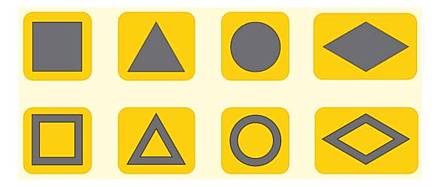
Now it makes sense as we were driving in the area after some heavy rains, and due to floods some of the routes were diverted.
This is a pretty cool example of engineering:
Awnings work by covering the top portion of window and thereby blocking the high summer sun from pouring into the window and heating the room. Since in the winter the sun is lower in the sky the awning, when positioned and sized properly, allows the winter sun into the room to warm things up.

No need to adjust or tweak anything – passive heating in the winter and cooling in the summer, thanks to the thoughtful design. Such a shame these are not as used anymore.
Apparently blackberries are deeply rooted in folklore:
The most common folk tale surrounding brambles is the warning not to eat the fruit after Michaelmas Day, the feast of the archangel Saint Michael. This is the day on which he cast Lucifer out of heaven, and Lucifer landed in a bramble thicket and cursed the brambles and spat on them. As is so often the case, these folktales have their roots in common sense. By Michaelmas, at the end of September, the bramble berries become flyblown and start to rot. They can subsequently be infected by various moulds, rendering them inedible, and the bitter taste of the tannin in the fruit becomes much stronger and unpleasant.
I don't think these days it's still true: bitter taste doesn't show until until late October, at least in Scotland. I know because I had some freshly picked berries from our garden just yesterday.
Book of the week
I rarely buy books of Russian authors, and almost never – in English, but I wanted to have Alexei Navalny's Patriot on my shelves, and I wanted it to be in the language my friends could understand when they pick it up, so here we are.
He overlooked the fact that inviting everyone into the garden would not lead to deferential discussion with an elite, full of allusive hints and skirting around contentious mat-ters. On the contrary, realizing that they now could speak out without getting beaten up, the denizens of the basement would climb up to the roof en masse and state bluntly that they had no water to drink and nothing to eat. The weight of their words, the reverberation of their stamping boots, and the indignation in their hearts would make everything come tumbling down.
I didn't regret that in the slightest. After all, what had I lost?
Russia, my country, was still there. I still had my language, Tolstoy and Dostoevsky. Moscow and Kazan and Rostov. The army was still there, and the state. Even the bureaucrats were still where they had been. Kiev, Tallinn, and Riga did not vanish into thin air. Everything was as it had been. You could go to those cities if you wanted to. What had changed was that now you had a choice, you had freedom. What remains of that freedom in Putin's Russia today, which is trying to pretend it is the U.S.S.R., is in fact much more than there was then. You can now choose your profession, where you want to live, and your lifestyle.
You no longer have to tie yourself in knots in a competition to see who can be the more two-faced in order to be allowed a trip abroad. You can just buy a ticket and go.
The book kicks off like a thriller, with the best part being the first chapter where Alexei walks us through his poisoning in Tomsk, minute by minute. Then it shifts into regular memoir territory - he talks about growing up, Russia, the Soviet Union, and all his political stuff like protests and arrests. By the end, it turns into prison writing. Throughout the book, you get bits and pieces of his social media posts and courtroom speeches. Interestingly, the English copy (and that's the one I have) seems to have the Instagram pictures for added context, while in Russian they seem to be omitted – not sure why.
I can't say these are the best memoirs I've read so far, but they're definitely going to leave their mark in history – as did Navalny – mainly because it's a really gripping read - both because Navalny led such an interesting life and because he was just naturally great at telling stories. The book is super engaging, often funny, and not afraid to get emotional at times. You might not agree with everything he says - I don't share all his political views. But hey, you don't have to be his fan to see how important he was in Russian politics, and you don't need to agree with everything to enjoy the book.
Thank you and see you in a week
(or in a month)!
|










